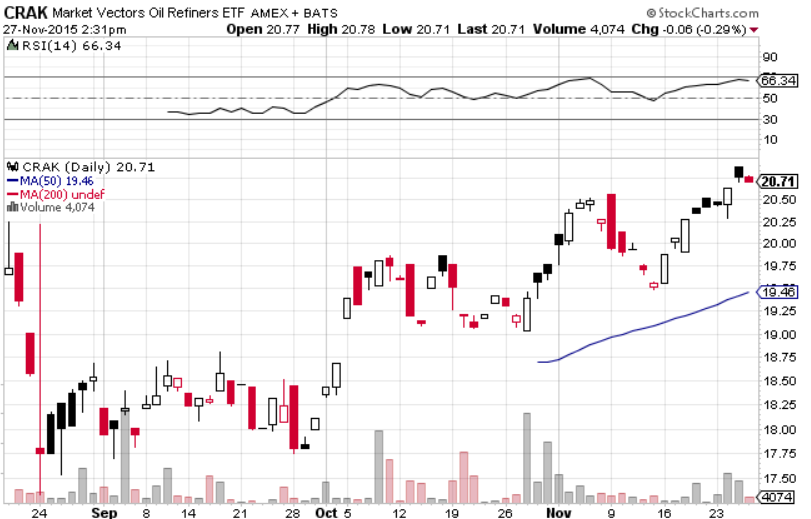Oil Glut Not Gloomy for All Energy ETFs
As Organization of Petroleum Exporting Countries raise production in their campaign to stamp out competitors, oil refiners and sector-related exchange traded fund could benefit from the cheaper input costs.
OPEC members will meet on December 4 in Vienna where Iran is expected to announce plans to raise production by 500,000 barrels per day, further bolstering the group’s output, which has exceeded targest for 17 months, and exacerbating the global oil glut, Bloomberg reports.
The oil cartel has exceeded its output target of 30 million barrels per day since June 2014 as the group pumps record amounts of crude in an attempt to squeeze out high-cost competitors, such as the upstart U.S. shale oil industry.
The output target could rise further after the U.S. lifted sanctions on Iran over its nuclear energy program, clearing the way for Iranian oil to hit the markets.
However, with the expected increase in supply, the potentially cheaper oil prices could benefit refiners, which have been seeking cheaper sources of crude oil.
For instance, over the past three months, the Market Vectors Oil Refiners ETF (CRAK) , which tracks global oil refiners, rose 17.0%.
“This is probably the best time we’ve ever had as a buyer,” Kim Woo Kyung, a spokeswoman for SK Innovation Co., South Korea’s largest refiner, told Bloomberg. “We are enjoying an overflow of oil.”
Sk Energy Co makes up 5.3% of CRAK’s underlying holdings.
Asian processors have been among the best performers as the companies capitalize on the steady flow of cheap oil from the Middle East, Mexico, Nigeria and Russia. CRAK’s Asia country components include Japan 14.3%, South Korea 8.2%, India 6.8%, Taiwan 4.5% and Thailand 3.2%.
The oil refinery business benefits from lower crude oil prices, or lower input costs. Meanwhile, the price of finished products such as gasoline, diesel and fuel oil can affect a refinery’s profitability. Consequently, the difference between the cost of crude oil and the price of the products, or so-called crack spread, is a common indicator of the potential profits. Profits from turning crude into naphtha, which is used to produce gasoline and petrochemicals, jumped to $9.42 per barrel this month, the highest level since May.
“Refining margins in Asia have stayed very strong, certainly much stronger than in 2014, largely because feedstock prices have dropped significantly,” Victor Shum, a vice president at IHS Inc., told Bloomberg.
Market Vectors Oil Refiners ETF
For more information on the oil industry, visit our energy category.
Max Chen contributed to this article.
The opinions and forecasts expressed herein are solely those of Tom Lydon, and may not actually come to pass. Information on this site should not be used or construed as an offer to sell, a solicitation of an offer to buy, or a recommendation for any product.

 Yahoo Finanzen
Yahoo Finanzen 
